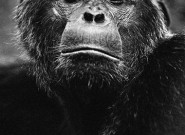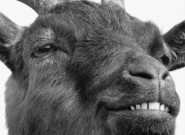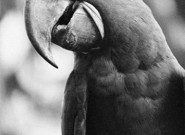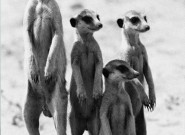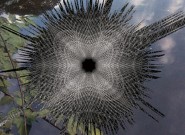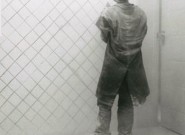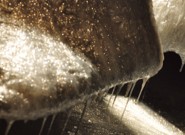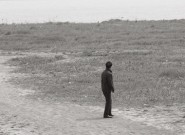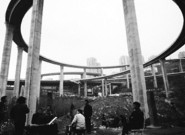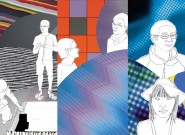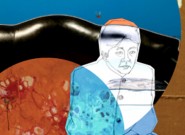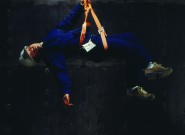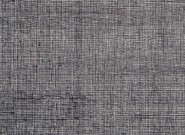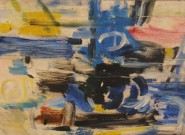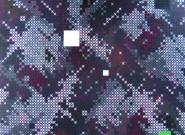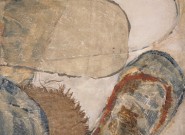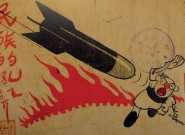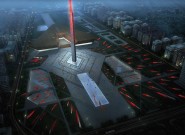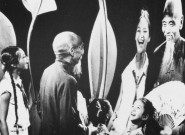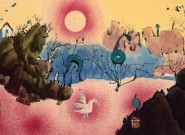GIORGIO AGAMBEN Born in 1942, Giorgio Agamben currently teaches at the Università Iuav di Venezia, the Collège International de Philosophie in Paris, and the European Graduate School in Saas-Fee, Switzerland. In works including Homo Sacer and The State of Exception he furthered Foucault’s and Arendt’s explorations of political philosophy, while his…
Read MoreApart from housing ShanghART Taopu Warehouse and artist studios, the Taopu art district has also served as the setting for two major exhibitions by local artists: “Future Festival,” and “TOP Contemporary Art Events.” The former was the brainchild of artists Ding Li, Jin Feng, Shi Qing, Yang Zhenzhong, Xu Zhen, and Zhou Xiaohu, among others,…
Read MoreTHE 30 SHORT years since the advent of Chinese contemporary art have also seen wave upon wave of interest in Western theory, beginning with the popularity of existentialism in the 1980s. The impact of these trends is readily apparent within artworks such as Zhong Ming’s He Is Himself—Sartre. Later, following the entrée of postmodern theory,…
Read MoreEver since the ‘85 New Wave, discussions about theory have been part of the progress of contemporary art in China, and on multiple occasions theoretical debates have taken center stage. In the 1980s, translations of Sartre and the existentialist writers, of varying quality and accuracy, found their way into the country, as did a great…
Read More“AMONG COMRADES” Philosophy (theory) is often abstruse. Even when reading the works of celebrity philosophers like Žižek, it is impossible to avoid the obscure (specialized) element of philosophy. Strip out the Hitchcock references, political jokes and raunchy remarks, and what remains of a Žižek essay is a specialized text interlaced with all kinds of concepts….
Read MoreINSIDE, OUTSIDE, AND PERIPHERAL “NOW THAT WE’VE finished going through all of the traditional types of painting and the history of art in Hubei, we are definitely going to move in a more modern and contemporary direction.” As he speaks, Hubei Art Museum director Fu Zhongwang is sitting in the museum’s coffee shop, looking out…
Read MoreWHEN ONE SPEAKS of the strong presence the Sichuan Fine Arts Institute (SFAI) has established within the Chinese contemporary art world, it is often in conjunction with the stream of painters who have emerged from it over the past 30 years. Consequently, in the eyes of many, SFAI is a breeding ground for painters who…
Read More“I CAME TO Wuhan looking for rocks,” announced one young Beijing-based artist in explanation of his presence in Wuhan. Rocks are to be found everywhere; why this city? (Rock and roll? If the conversation were in Chinglish, he could have been mistaken for referring to local punk rock. Sadly, the slippage does not exist in…
Read MoreTHE TOPIC ON every Chongqing resident’s lips as of late has been the newly planted gingko trees lining the city’s streets. Chongqing itself not having enough of its own gingko trees to complete the job, most of the trees now stationed along the city’s main boulevards were shipped in from neighboring provinces as part of…
Read MoreLIU WENTAO, WANG GUANGLE: SPACE AND TIME LIU WENTAO My early works consisted of piling layers of pencil lines on paper, gradually producing a highly compressed surface. Like looking at a flat plane of water, at a surface that gives no clues as to its actual depth,…
Read MoreLAO ZHU: THE THIRD ABSTRACT The unforeseen emergence of abstract art in the modernism of late-1970s China can be attributed to two major factors. One is political, one artistic. First, the political: after the founding of new China in 1949, art policy labeled abstract expression as bourgeois; it…
Read MorePerhaps, ten or twenty years from now, we will see the abstractionism of China today as something akin to American Abstract Expressionism. After the Second World War, the United States, through Abstract Expressionism, completely remolded traditional European expressionism and thereby affirmed its own status as a cultural center. In this sense, today’s Chinese abstraction serves…
Read MoreShanghai has been a model region for the practice of abstract art in contemporary China. Over the past 10 years, amidst the overall pattern of Chinese contemporary art, abstract art has come to be one of Shanghai’s emblematic features, one of its stronger cultural calling cards. TRACING BACK IN HISTORY SINCE THE MING and Qing,…
Read More“Abstract art” in China has reached a new high-water mark since its popularity during the ’85 New Wave. This revival can be recognized in the growing and increasingly active groups of young artists that practice abstraction in their works, with each developing in unique directions. Correspondingly, exhibitions on “abstraction” have grown in number— as have…
Read MoreUnder the present conditions in China, if a more thorough analysis of the concept of abstraction is not carried out, then it will gain a kind of cognitive inertia and mutate into a new popular symbol. In fact, we are already witnessing this risk, particularly in this moment of large-scale marketing in the art world……
Read MoreIt is an incontestable fact that, in contemporary China, the original social and critical nature of cartooning has diminished. An exhibition of work by Huang Yao (1917-1987) at the Shanghai Art Museum earlier this year, curated by the author, showed a cartoonist working in Shanghai in the 1930s and 40s who possessed a spirit of…
Read MoreUnder the current set of social circumstances, the need for monuments is as pressing as ever. In Wuhan, birthplace the Xinhai Revolution— the uprising, named for its year in the Chinese calendrical system, which overthrew the Qing Dynasty in 1911— architects and planners think about how to commemorate and look forward. IN AN AGE where…
Read MoreLooking back, it is hard not to recognize the prescience of Shanghai’s early amusement parks. In the decades that followed, this festive mode of consumption rapidly spread throughout the world, becoming the anthem of entertainment for the urban middle classes. THE SETTING SUN spread over the broad, flat asphalt road. Flocks of cars and people…
Read MoreLUIS CHAN WAS born in Panama in 1905, moved to Hong Kong in 1910, and stayed there until his death in 1995. His artistic career spans nearly the entire twentieth century, and he is widely regarded as Hong Kong’s pioneer of modern art. He never received formal art training, but he showed an early interest…
Read More
